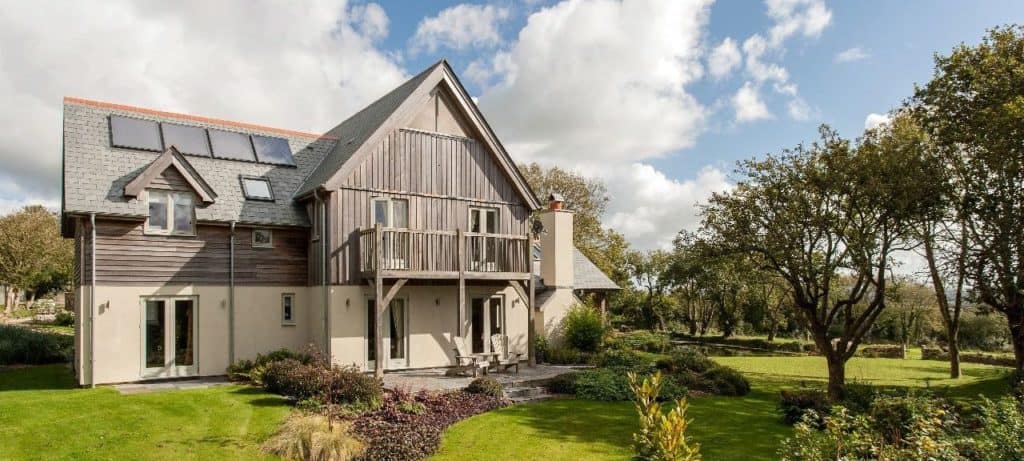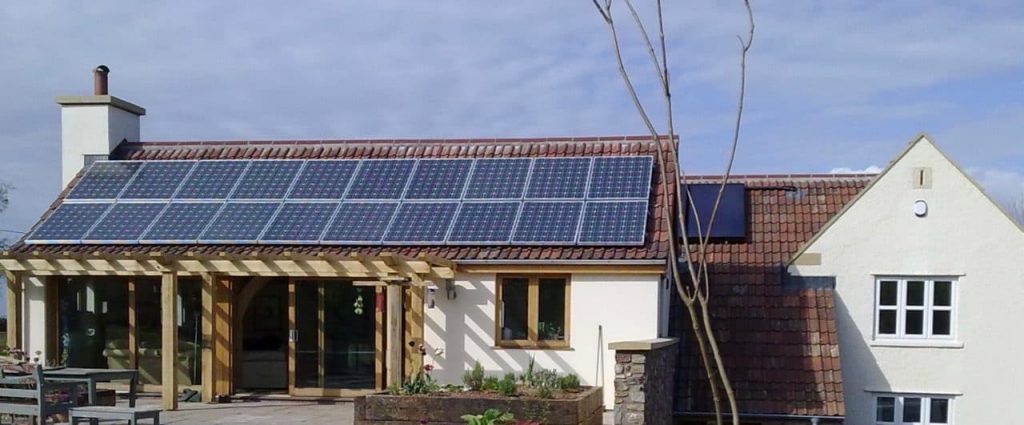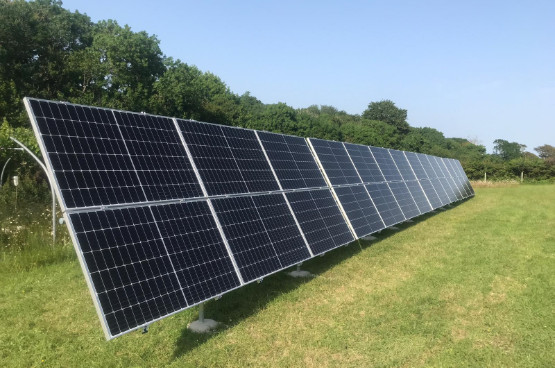It is now possible to live a lifestyle where you generate much of the energy you use on your own roof. So, you can greatly reduce your reliance on buying in electricity from your supplier. The way to do this is through a well-designed system, combining several elements.
How could this work for your house?
You can be self-sufficient during summer
During the summer, a well-designed solar PV system should enable you to generate the energy you need and some excess.
However, of course it only generates during daylight. If you’re home during the day, or you put your appliances on timers to come on during the day, you can increase your self-sufficiency with a solar PV system alone.
For greater self-sufficiency just add a battery to your system, to store any excess solar energy. The right battery setup should enable you to be self-sufficient during the summer. During the day, you’ll use energy from your solar PV system and during the evening and night you can use stored electricity from your battery.
Depending on your energy usage and when you’re at home, you may actually find that your battery becomes your biggest source of energy.
What about winter?
During winter there won’t generally be enough solar energy available to supply all of your requirements, although your system will continue to generate on brighter days.
However, if you have a battery and you change to a supplier offering what’s called “time of use” tariffs, you can charge your battery from the grid when it’s cheapest to do so.
You’ve probably heard of Economy 7, an older tariff where electricity is cheaper during the night. Today, some suppliers are offering more sophisticated “time of use” tariffs to householders.
Energy is most expensive during times of peak demand. For example, around the time most people arrive home from work and put the kettle on. At these times the grid (the UK network for delivering electricity from producers to users) is under strain as it tries to cope with a surge in demand. As a result, electricity prices go up.
The other side of this is that at times of low demand, suppliers have excess energy to offer and so can offer cheaper tariffs at these times.
You can take advantage of this by buying in your energy during off-peak times, such as the middle of the night. At these times energy is often around just 5 pence a unit and in some cases your supplier will actually pay you to take the energy from the grid.
Obviously you don’t want to have to get up to charge your car or watch TV in the middle of night and that’s where the “smartness” of your battery comes in. Smart batteries, such as Tesla Powerwall, can be set up to automatically charge at off-peak times. This means that in the winter your battery fills itself up on cheap off-peak electricity, which you can use to run your house at times where electricity is most expensive.
What if I have an electric car?
Having an electric vehicle changes the picture slightly because of course you’ll need more electricity to charge up. But, your fuel cost saving should more than compensate for this, especially if you have a battery. In summer, you can charge your vehicle using excess solar energy and in winter you can set your vehicle to charge during off peak hours, such as at night. This means that you can minimise the running costs of your vehicle as well.
As a guide, in our experience you can perhaps expect to get around 3.5 miles per kilowatt from your electric vehicle. If you charge using your solar energy this is free and with off-peak energy this can be as low as 5 pence per kilowatt, so 5 pence for 3.5 miles. This will of course depend on your vehicle and to some degree your journey type.
In summary, you can drastically reduce your costs and your carbon footprint
So in summary, through a combination of solar PV, energy storage and, if you’d like, electric car charging, you can hugely reduce your reliance on expensive bought-in electricity.
As well as saving on your household running costs this lifestyle is much less carbon intense.
Of course your solar energy is clean and carbon-free but even where you are buying in off-peak electricity you are helping to make the grid more stable and cost effective for the country, as well as reducing carbon intensity, which peaks at times of high demand.
One key point to bear in mind is that for a solar PV and battery system to work best for you they need to be designed with your needs and your property in mind. There is no “one size fits all” solution.
To talk to one of our team of experts on a no-obligation basis about how you could be more self-sufficient, please do get in touch.

 Solar PV Contractor of the Year 2024
Solar PV Contractor of the Year 2024


